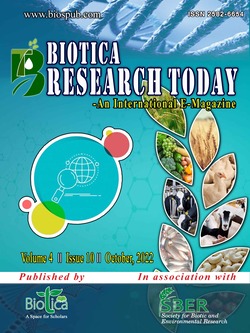
Synthetic Fibre Wastes
S. Lokesh
Dept. of Environmental Sciences, Tamil Nadu Agricultural University, Tamil Nadu (641 003), India
E. Parameswari*
Dept. of Environmental Sciences, Tamil Nadu Agricultural University, Tamil Nadu (641 003), India
DOI: NIL
Keywords: Health impacts, Manmade, Synthetic fibres, Waste
Abstract
The maximum waste materials from the creation of synthetic fibres are used to create secondary products, either by the manmade fibre business or by other agencies. Recycled monomer is used as a starting material for main and secondary products. Synthetic fibre waste toxicity refers to the extent to which a substance can harm an organism. The goal of this article is to raise public awareness of the negative and dangerous impacts of synthetic and semi-synthetic fibres. Historically, most fabrics were manufactured from fibres originating from natural sources such as cotton, wool, silk, and jute. Those fibres were traditional, eco-friendly, and non-toxic to wear. However, numerous textiles are currently used in drapes, bedding, businesses, schools, and hospitals. Many synthetic textiles are used for personal purposes such as designer wear, fashion costumes, yet the majority of them are created with chemicals. These synthetic materials also endanger the ecological balance.
Downloads
not found
Reference
Bajaj, P., Sharma, N.D., 1997. Reuse of polymer and fibre waste. In: Manufactured Fibre Technology. (Eds.) Gupta, V.B., Kothari, V.K. Springer, Dordrecht. pp. 595-632.
Bartl, A., 2011. Textile Waste. In: Waste. (Ed.) Vallero, D.A. Academic Press. Boston, USA. pp. 167-179.
Burkinshaw, S.M., 1995. Nylon. In: Chemical Principles of Synthetic Fibre Dyeing. Springer, Dordrecht. pp. 77-156.
Singh, Z., Bhalla, S., 2017. Toxicity of synthetic fibres and health. Advance Research Textile Engineering 2(1), 1012.
